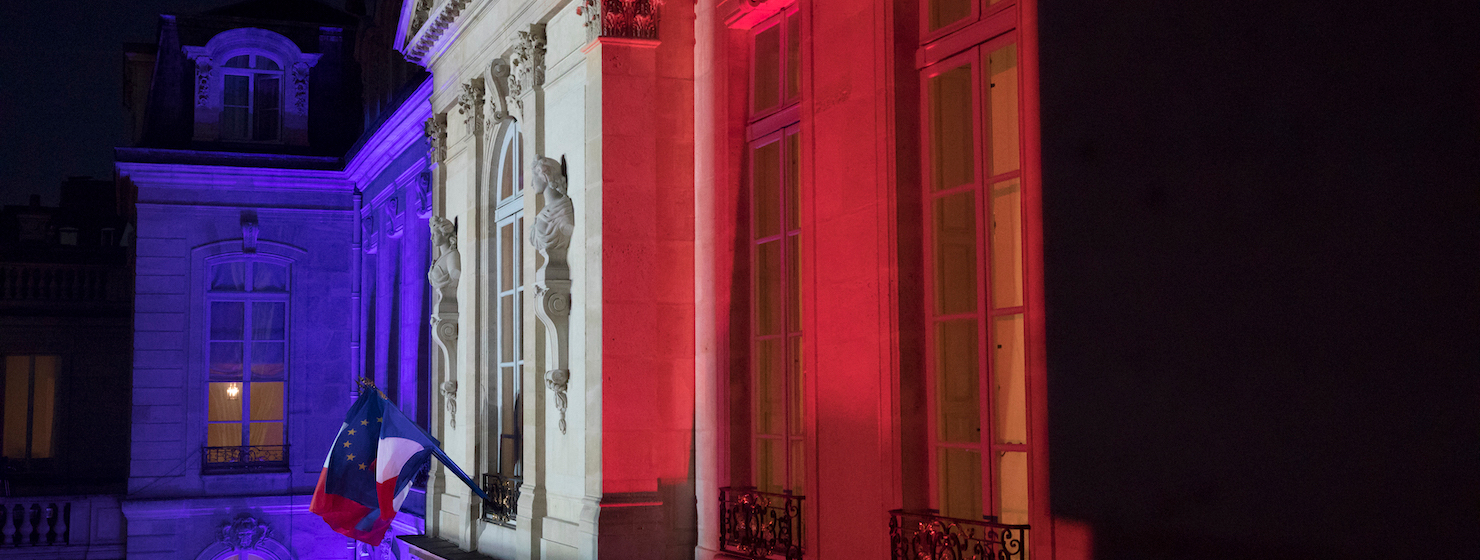The French flag
Blue. White. Red.
You will see these colours at football matches, town halls and every school in France. They are the colours of the French flag. Do you know why? White was the colour of the King. Blue and red were the colours of the city of Paris. The flag was created during the French Revolution in 1789, with the combination of the three colours symbolizing the alliance between the King and the people, and remains the symbol of a united France.
“Liberty, Equality, Fraternity”
These three words are the motto of the French Republic. Together, they represent the values which unite all French people.
As French people, we believe that each of us is born free and equal with everyone else. We also believe that in our lives, we must show fraternity, in order words help other people. We are proud of these values and they represent us the world over.
La Marseillaise by Rouget de Lisle
“Arise, children of the Fatherland,
The day of glory has arrived!”
If you have heard those lyrics before, it’s because they are the start of the French national anthem, the song which represents France (e.g. in ceremonies and sports competitions). It was written during the French Revolution, when the French people were fighting each other, at a time when they needed to unite to repel attacks from enemy countries. Still today, when we sing it, we cast aside our differences and we remember that we are all French.
Marianne
Marianne is easily recognizable as she always wears a cap. She is depicted on French postage stamps and her statue is in every town hall in France. But just who is “Marianne”? Marianne was the face chosen during the French Revolution to portray the Goddess of Liberty and the Republic. Her cap is actually called a “Phrygian cap”. In ancient times, this type of cap was worn by slaves when their master had decided to liberate them, to set them free. Some supporters of the French Revolution, the “sans culottes” also wore the cap.
Bastille Day, 14 July
Did you ever wonder why there are fireworks all over France every 14 July? It is the French national holiday, Bastille Day. It is celebrated to commemorate 14 July 1790: a year after the storming of the Bastille, which was the start of the French Revolution, the Festival of the Federation was held to mark the unity between all French people. It is as a reminder of this unity that 14 July is a public holiday each year. Military troops march down the Champs-Élysées in Paris to show the strength of the Republic.
The seal
A seal is used to close a document. Sealing a document makes it official and inviolable. The seal of the Republic represents its attributes: the lady representing liberty, the rooster, agriculture... Nowadays, the seal is only used for very official occasions like changes to the Constitution.
The rooster
The animal which usually represents France is the rooster. Do you know why? It goes back a long way. In ancient times, there was no such thing as “French” people. The people who lived here were called “Gauls”. But in Latin, “gallus” means both “rooster” and “Gaul”. So maybe that explains why French people are so proud – proud as roosters!
The lictor’s fasces
Along with Marianne, this is another symbol of the Republic. You can see it on a French passport, for example. It shows an axe surrounded by branches. It was used in ancient Rome, where a person called a lictor carried it during trials. It was then used during the French Revolution: it represents the uniting of all French people (symbolized by branches) behind a single cause (Liberty). This symbol can also be found on the badges of French senators and members of Parliament.
The others symbols

Updated : 20 January 2023
